View current page
...more recent posts

hat tip to L.M.
"Whiskey Tango Fubar" [mp3 removed]
Expect there will be more variations of this, with different instruments, added harmonies, etc. I wrote the "main theme" while waiting for an out of town guest to come over for a studio visit. Originally it was all synth (the part that comes in in the middle) but I liked the relentlessness of it on the piano. The drum machine parts combine live and sampled hits (live as in live electronics). I wanted them kind of loose and desultory to contrast with the piano--all of this can be tightened and made more "classical."
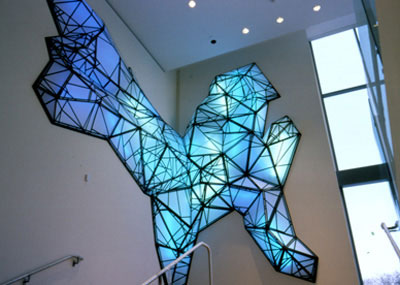
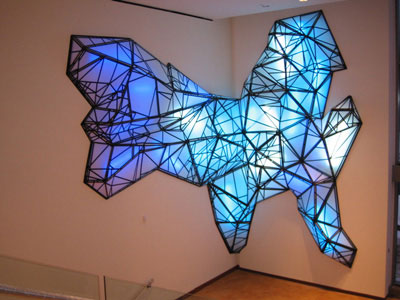
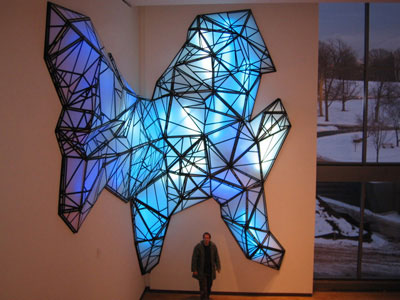
Stephen Hendee, The Eye, New Britain Museum, New Britain, CT, USA, 2005
points of comparison to the Nathaniel Stern work in the previous post:
-specifically evokes "wireframe" computer model (or "invokes" in the case of Stern, who uses the word in his title)
-reproduces wireframe outlines as an actual object
-"problematizes" computer drawing with surrealist invention, deformation
-use of materials such as tape and foamcor (Hendee) and rope (Stern) suggests folk-like or cargo-cult-like reification or fetishization of high technology
-inverts the idea of a computer as effortless and airy through the conspicuous employment of hand labor
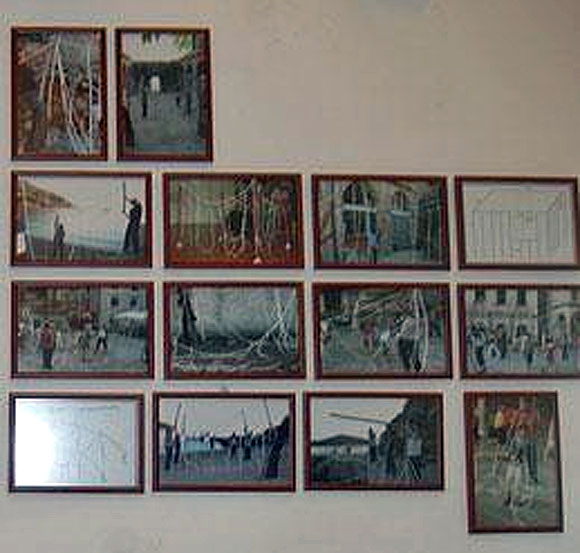
Apologies for the aggressive enlargement and resulting blurriness and artifacts in this photo by Joy Garnett. It's an installation of some photos of a performance work by Nathaniel Stern called The Wireframe Series: Sentimental Construction #1. Some clearer photos are here. This blog had its own wireframe aesthetics series a few years back so the topic is of interest. Paddy Johnson has little use for Stern's piece in her review of it today but it merits a stab at a long distance defense. The idea is to haul an Oldenburgized version of a 3-D computer drawing (what might be called "giant soft building outline") out into the streets of Dubrovnik and photograph people erecting it in the style of an Amish barn-raising. Thus hard becomes soft, virtual becomes actual, private becomes public. The sculpture is not of itself interesting--it is activated through its contact with people (like certain objects by Franz West or Helio Oiticica that were meant to be carried or worn) and by being photographed. In the photos, the softened or molten outlines of the rope building become a classic surrealistically "problematized" image, re-envisioning something hard and artificial as pliable and organic. They also represent a regression or devolution of the CAD-generated modernist box by being juxtaposed against the cobbled streets of an older Mediterranean city, and by their handling by real live human beings. Looks good from this side of the Atlantic and this side of the computer screen.
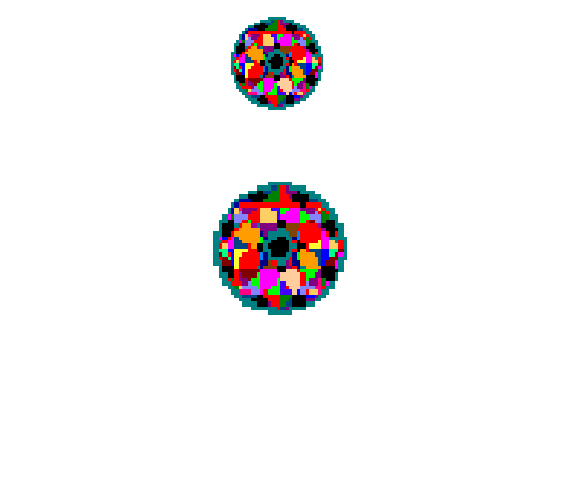
artist unknown--thanks to harm, who found it
The post on the Rhizome 2007-2008 commissions as XYZ Art (reblogged here, thanks cpb) elicited the following response:
Don't see how XYZ relates solely to these types of new media projects. Painting, sculpture, photography, many mediums use a trial-error process similar to science. For instance one commonly develops a style or signature process (the algorithm), often paying big gradschool dollars for it, then alters X strokes or colors, looks at the Z surface, changes X some, then goes for the super awesome Z for the finish. - ssrAnd my reply:
That's funny, but we're not talking about a trial-error process. It's more like one application: a single transformation of something into something that "helps others."
The art world equivalent would be a conceptual art work, something like Meg Cranston's Who's Who by Size, University of California Sample, 1994, where different fabric-covered sculptural stacks (Z) represent the number of inches of shelf space (X) that a subject (Edgar Allen Poe, Elvis Presley, etc) has in a college library. The algorithm or (Y) is assigning a fabric to the subject (Anna Pavlova in ballet slipper satin, etc) and making the stacks. The work has a point, and one point only, to show intuitively that "size matters" in assessing one's historical reputation. (I got this example and some of the description from the book Deep Storage, ed. by Ingrid Schaffner and Matthias Winzen.)
Grad schools turning out cookie cutter painting is rather a different issue.
etc:
spider car
cat vs TV reporter
super-pissed off cat
cat vs mini-helicopter
cobra vs baby (damn--"removed for terms of use violation"--oh, well)
from singe's journal
BruceB reconsiders the Niven & Pournelle science fiction novel The Mote in God's Eye in light of the "9/12 mentality" of Glenn Reynolds and other techno-class warmongers: "What most troubles me now is the glibness of it, the emphasis on the cleverness of the humans who see through the Motie deceptions, since this looms even larger than the courage of some humans who must die for the sake of plot developments. And itís completely callous about the wisdom and morality of just standing by and watching an entire society collapse into barbarism - since itís not the full-blown genocide some authorities had thought be necessary, itís an improvement, and it seems like since itís not genocide, itís A-OK. Other peopleís stuff is there to be exciting and interesting props, but it and its owners can be shoved around and broken up as need be, and what really matters (as presented in Mote) is the coolness of the humans whoíll do the pushing and breaking."
